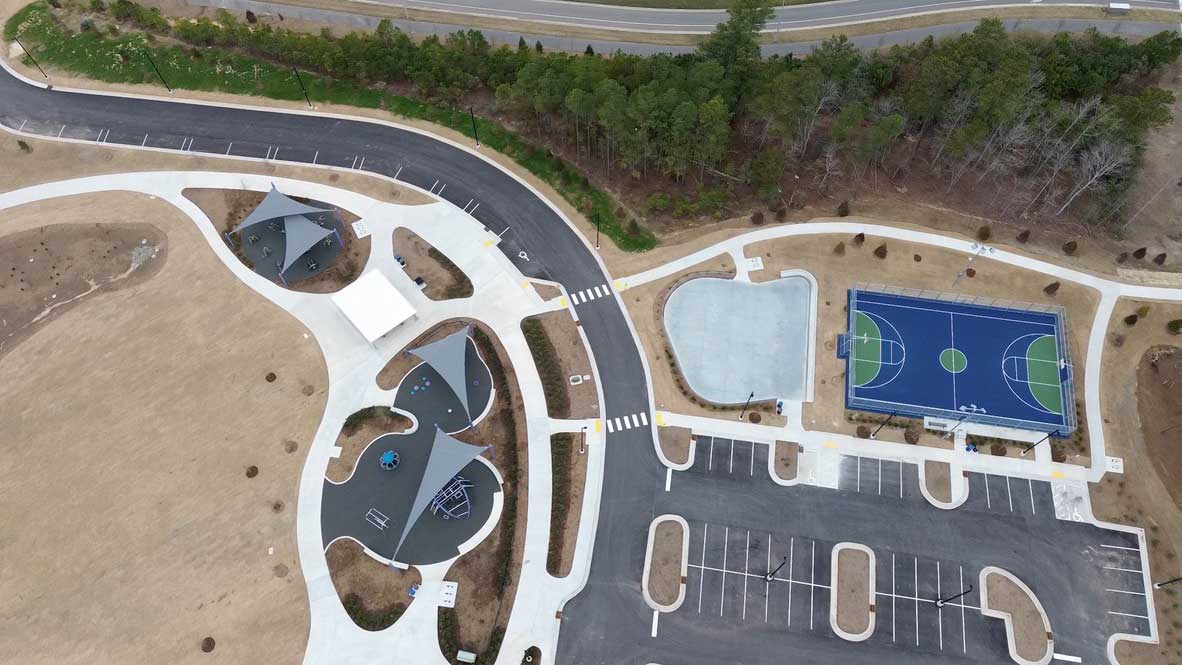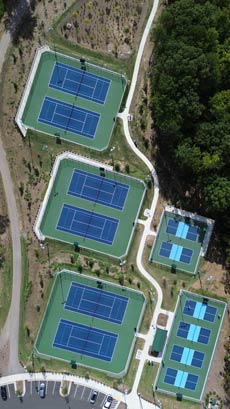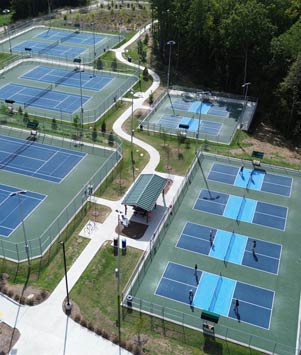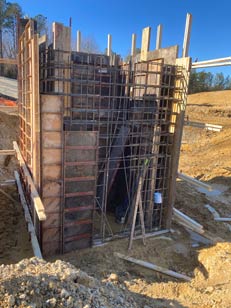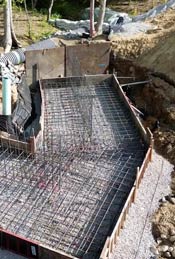GC Construction Services is a post-tensioned slab specialist serving the Cary, Durham, and Raleigh North Carolina area. Our experienced concrete company has the capacity to complete large scale post tension slab projects of all sizes. There is no job that is too large for the GC Construction Services team. As local concrete experts we understand the unique conditions associated with the Triangle’s climate and soil conditions. Our expertise will ensure that the post tensioned slabs will stand up to the test of time. Below you will be able to learn more about our company and post tensioned slabs. If you want to receive a quote or have questions regarding post tension slabs, call us or click here to send a message.
Why Hire GC Construction Services
Local Company — Creating the best quality of post-tensioned slabs requires in-depth knowledge about the local soil types and climate. GC Construction Services is local to the Raleigh, Cary, and Durham North Carolina area. We are well known in the Triangle area for our high quality craftsmanship and region specific expertise in the concrete industry.
Quality Craftsmanship — GC Construction Services is committed to using our expertise to create the highest quality of product possible. We believe that when we create the best possible product for our clients, our reputation will take care of itself. Our company has consistently delivered an impeccable end product to industrial, commercial, and residential clients throughout the Triangle area.
Pricing — GC Construction Services has some of the most competitive prices when compared to other companies capable of delivering the same caliber of end work. Our expertise and close-knit team of experts allows us to work efficiently without sacrificing the quality of work. Therefore, we are able to provide clients with competitive prices and keep projects on schedule.
Call us now or send a message to schedule your quote.
What Are Post Tensioned Slabs?
Post tensioned slabs are a specialized type of concrete slab that is reinforced. It is designed to handle larger spans and loads than traditional concrete slabs. Creating post tensioned slabs involves imbedding steel cables and or tendons into a slab of concrete. Those cables are later tensioned to increase the flexibility and strength of the concrete slab. Due to their strength, post tensioned slabs have a wide range of uses. Post tensioned slabs allow concrete to have longer spans without immediate supports. Additionally, the slab can handle heavier loads without compromising the integrity of the concrete. Due to the increased stability, post tensioned slabs allow for greater flexibility when it comes to the design of structures.
Post Tensioned Slabs Are Commonly Used In:
Commercial Buildings — Parking garages, office complexes, warehouses, and shopping centers.
Industrial Facilities — Factories, distribution centers, and large storage buildings.
Residential Projects — High-rise buildings, large apartment buildings, large homes with large floor plans.
Bridges & Overpasses — Post tensioning is also used in bridge construction to handle the large amount of weight and strain they are put under.
Tennis, Basketball, and Pickleball Courts — You may be surprised to find out that a lot of outdoor sports courts use post tensioned slabs. The post tensioned slabs allow for a level playing surface and a long lifespan without cracks.
When Does a Project Require Post Tensioned Slabs?
Soil Conditions — Post tension slabs are ideal for some soil types found in North Carolina. We have 7 different types of soil in North Carolina. Some of those soil types are specific site locations that have poor quality soil that is subject to erosion and settling. Post tensioned slabs are ideal for high water tables and poor soil because they are able to resist ground movement.
Heavy Loads — When compared to traditional concrete slabs, post tensioned slabs are less likely to crack due to shrinkage, temperature changes, and external loads. If a concrete slab is likely to support heavy loads, post tensioned slabs are an ideal alternative to traditional concrete slabs.
Structural Instability — If your project requires more structural stability, post tensioned slabs can provide that additional stability. Post tensioned slabs are more rigid than traditional concrete slabs. Therefore, they are able to handle instabilities under the ground. In other words, post tensioned slabs can lead to increased stability and allow the structure’s integrity to stay intact over the long term.
Localized Settling — When one side of a foundation sinks faster than the others, this is referred to as localized settling. Localized settling can cause cracks and other structural issues. Post tensioned slabs are usually necessary for tall buildings because localized settling could cause a lot of damage.
What Is the Post Tensioning Process?
The post-tensioning process has several important phases. Each one of these phases must be followed with precision to ensure the slab’s strength and longevity.
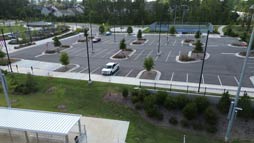
Planning & Design — If there is not an existing blueprint design, our highly experienced team of concrete experts designs the post tensioned slab based upon the project’s requirements. The planning and design phase is one of the most important phases of a post tensioned slab project. Part of the design process includes designing the placement of the steel cables in order to optimize the load distribution and structural integrity.
Formwork & Tendon Placement — The next step is to set up the forms that the concrete will be poured into. Then steel cables (tendons) are positioned and run through conduit so the steel cables cannot come into direct contact with the concrete.
Concrete Pouring — Concrete is then poured around the steel cables where the slab structure is created. It is critical to make sure the concrete fully surrounds the steel cables (tendons) so there is a solid foundation for tensioning the slab.
Tensioning Cables — Once the concrete has fully cured, the steel cables (tendons) are able to be tightened by using hydraulic jacks. When the cables are tightened it compresses the concrete and enhances its load-bearing capacity.
Anchoring the Tendons — The heavy steel cables (tendons) are anchored in place at the edge of the concrete slab which locks in the strength of the post tensioned slab. Then the concrete can be finished so it can be made to reflect the desired texture and appearance.
Call Us to Schedule Your Quote
If you have a project that you need post tensioned slabs for, call GC Constructions Services.
We will provide you with a detailed plan and or proposal for your project. Our company looks forward to working with you on your post tensioned slab project.

